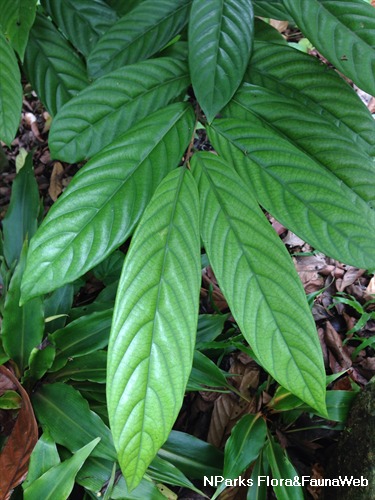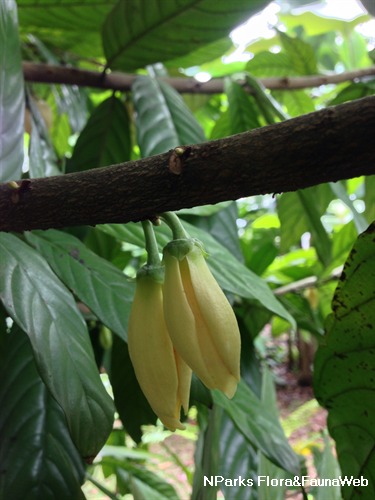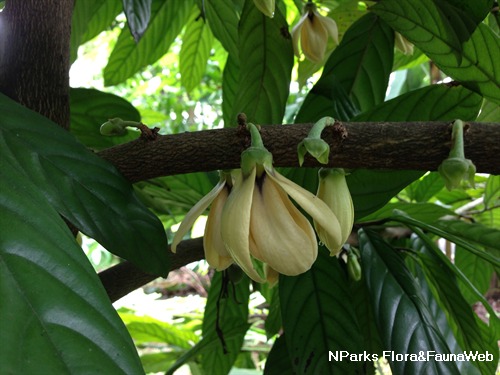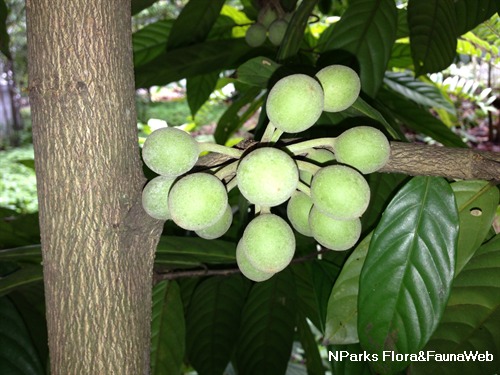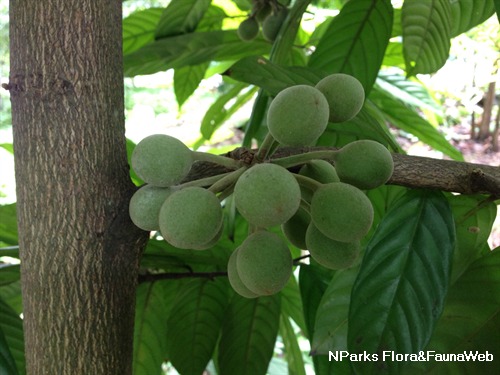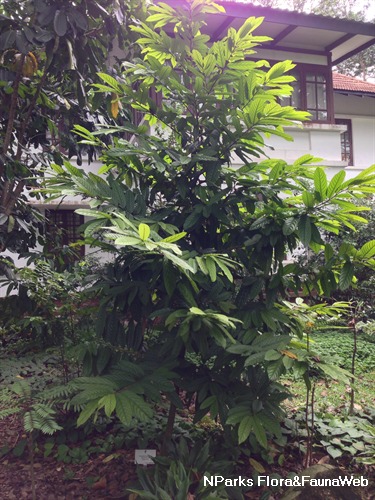
Back
Huberantha rumphii (Blume ex Hensch.) Chaowasku
| Family Name: | Annonaceae |
| Synonyms: | Polyalthia rumphii, Hubera rumphii |
Name
Classifications and Characteristics
| Plant Division | Angiosperms (Flowering Seed Plants) |
|---|---|
| Plant Growth Form | Tree (Shrubby (1m-5m), Small (6m-15m)) |
| Lifespan (in Singapore) | Perennial |
| Mode of Nutrition | Autotrophic |
| Plant Shape | Irregular |
| Maximum Height | 5 m to 15 m |
Biogeography
| Native Distribution | Peninsular Malaysia, Singapore, Sumatra, the Philippines, Borneo, Java and the Moluccas |
|---|---|
| Native Habitat | Terrestrial (Primary Rainforest, Freshwater Swamp Forest) |
| Preferred Climate Zone | Tropical |
| Local Conservation Status | Native to Singapore (Critically Endangered (CR)) |
Description and Ethnobotany
| Growth Form | It is a tree 5–15 m tall. |
|---|---|
| Foliage | Its alternate, stalked leaves have thinly leathery blades that are oblong-lance-shaped, shiny-green above, slightly hairy, and 10–22 by 3.5–7.5 cm. Its leaf blade midrib and veins are more raised below. |
| Flowers | Its flowers grow singly at the axils of its branches, have leathery petals that are lance-shaped, green, and changing to yellow upon maturation. Its edges are often wavy but vary in shape. Its sepals are triangular, covered with hair on both surfaces, and 0.6–1.5 cm long. |
| Fruit | Its fruits are oblong and 0.9–1.1 cm long. Each fruit contains 1 smooth seed. |
| Habitat | It grows in inland forests up to 950 m altitude. |
| Associated Fauna | Its flowers are pollinated by insects. |
| Cultivation | It can be propagated by seed. |
| Etymology | Greek, Poly, many; Greek althia, healing, referring to the possible healing properties of the plant; Latin rumphii, commemorating Georg Eberhard Rumphius (1627–1702), Dutch author of Herbarium Amboinense |
Landscaping Features
| Landscaping | It is suitable for parks. |
|---|---|
| Desirable Plant Features | Ornamental Flowers |
| Landscape Uses | Parks & Gardens |
Fauna, Pollination and Dispersal
| Pollination Method(s) | Biotic (Fauna) |
|---|
Plant Care and Propagation
| Light Preference | Full Sun, Semi-Shade |
|---|---|
| Water Preference | Moderate Water |
| Plant Growth Rate | Moderate |
| Rootzone Tolerance | Moist Soils, Well-Drained Soils, Fertile Loamy Soils |
| Propagation Method | Seed |
Foliar
| Foliage Retention | Evergreen |
|---|---|
| Mature Foliage Colour(s) | Green |
| Mature Foliage Texture(s) | Leathery, Thin |
| Foliar Type | Simple / Unifoliate |
| Foliar Arrangement Along Stem | Alternate |
| Foliar Attachment to Stem | Petiolate |
| Foliar Shape(s) | Non-Palm Foliage (Lanceolate, Oblong, Oblanceolate) |
| Foliar Venation | Pinnate / Net |
| Foliar Margin | Entire |
Floral (Angiosperm)
| Flower & Plant Sexuality | Bisexual Flowers |
| Flower Colour(s) | Green, Yellow / Golden |
|---|---|
| Flower Grouping | Cluster / Inflorescence |
| Flower Location | Axillary |
| Flower Symmetry | Radial |
Fruit, Seed and Spore
| Mature Fruit Colour(s) | Green - Light Green |
|---|---|
| Mature Fruit Texture(s) | Velvety / Furry / Tomentose |
| Fruit Classification | Aggregate Fruit (Syncarp) |
| Fruit Type |
Image Repository
Others
| Master ID | 31155 |
|---|---|
| Species ID | 5549 |
| Flora Disclaimer | The information in this website has been compiled from reliable sources, such as reference works on medicinal plants. It is not a substitute for medical advice or treatment and NParks does not purport to provide any medical advice. Readers should always consult his/her physician before using or consuming a plant for medicinal purposes. |

